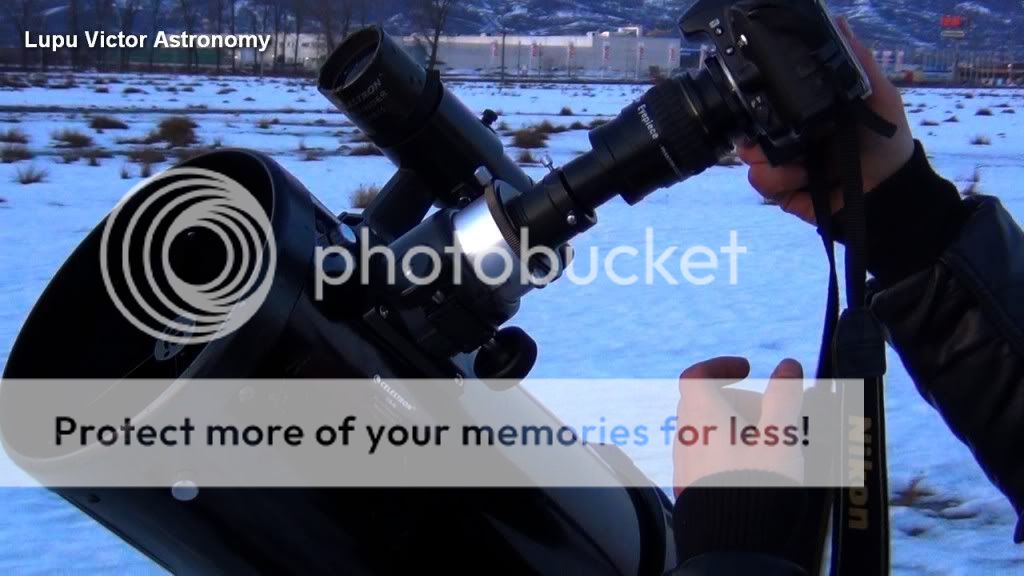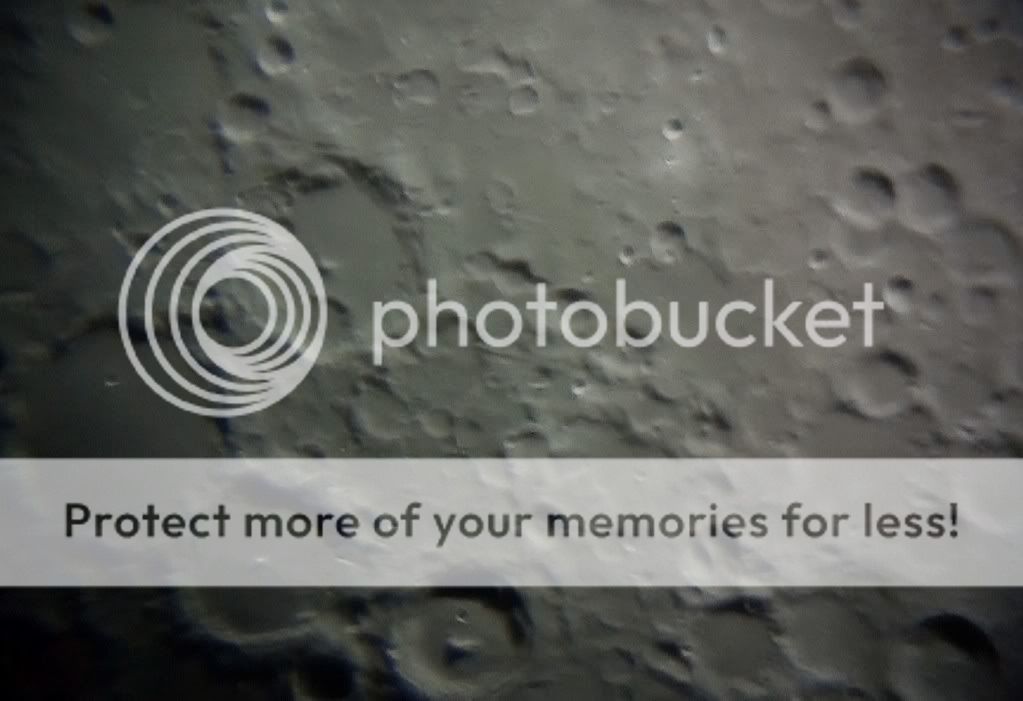Photographer: Victor Lupu
Optics: Celestron C8-Newtonian reflector telescope, plossl 20mm, 2x Barlow
Mount: CG5 (EQ5)
Device: Sony HDR CX105
Filter: No
Date: 10/02/2011
Location: Baia Mare, Romania
Processing: video capture
Optics: Celestron C8-Newtonian reflector telescope, plossl 20mm, 2x Barlow
Mount: CG5 (EQ5)
Device: Sony HDR CX105
Filter: No
Date: 10/02/2011
Location: Baia Mare, Romania
Processing: video capture
Ptolemaeus (153 km.). Ptolemaeus crater features are highlighted when the sun is at low angles during the first quarter and last. When is Full Moon, crater contour become more difficult to discern.
The crater has a rim with low height, with an irregular polygon, although it generally is circular. The largest of the peaks along the edge, called Ptolemaeus Gamma (γ), has an altitude of 2.9 km and is located in north-west along the border. Ptolemaeus has no central peak.There are several small craters on its floor, the most noted being Ammonius on north-east
Crater name comes from Claudius Ptolemaeus (Ptolemy), (90-168 AD).
Ptolemaeus was a Roman citizen from Egypt who wrote in greek.He was a mathematician, astronomer, geographer, astrologer, and a poet and lived in Egypt under Roman rule.It is believed to have been born in the town of Ptolemais in Thebaid Hermiou. He died in Alexandria around 168 e.n.
The crater has a rim with low height, with an irregular polygon, although it generally is circular. The largest of the peaks along the edge, called Ptolemaeus Gamma (γ), has an altitude of 2.9 km and is located in north-west along the border. Ptolemaeus has no central peak.There are several small craters on its floor, the most noted being Ammonius on north-east
Crater name comes from Claudius Ptolemaeus (Ptolemy), (90-168 AD).
Ptolemaeus was a Roman citizen from Egypt who wrote in greek.He was a mathematician, astronomer, geographer, astrologer, and a poet and lived in Egypt under Roman rule.It is believed to have been born in the town of Ptolemais in Thebaid Hermiou. He died in Alexandria around 168 e.n.
Alphonsus (108 km) is an ancient impact crater on the Moon that dates from the immediate post-Nectarian era. It is located on the mountainous eastern end of Mare Nubium, and overlaps slightly with Ptolemaeus crater to the north. The exterior walls are slightly distorted and have a shape somewhat hexagonal. To the northwest is Alpetragius (40 km), smaller.
Central, shows a sharp peak called Alphonsus Alpha (α). This pyramid-shaped ridge rises to a height of 1.5 km above the inner surface. It is not of volcanic origin, but rather is made of anorthosites.
Alpetragius (40 km). The most notable feature of this crater is that it shows a large central peak, forming a rounded growth occupying almost the entire floor of the crater diameter that rises to a height of 2.0 km. There is evidence that this peak was enhanced by volcanic eruptions.
Other craters in this photo are: Albategnius, Arzachel, Thebit, Purbach, Regiomontanus, La Caille, Blanchinus, Aliacensis, Apianus Werner, Airy, Klein, Doati and Davy.
Airy has an edge worn and somewhat polygonal, broken the heads of north and south. It has an irregular floor and a central peak.
The name of the crater is and the honor of Sir George Biddell Airy (27.07.1801-02.01.1892), who was an English astronomer and mathematician.
Both north and south ends of Vogel's are interrupted by smaller craters. Vogel B is superimposed along the northern edge of smaller craters, forming an interconnected group of craters Vogel being the biggest.
The name comes from the Hermann Carl Vogel (03.04.1841-13.08.1907) who was a German astronomer from Leipzig, Saxon kingdom.










 Wednesday, May 04, 2011
Wednesday, May 04, 2011
 Unknown
Unknown

















